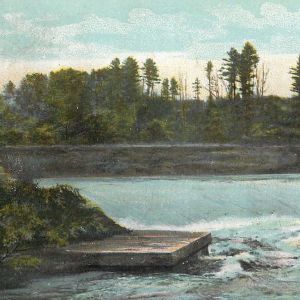Land nesters
| Published: 04-17-2020 4:18 PM |
If ever there was a time to look to nature for some grounding, a place to escape and a reminder of normalcy, this is one of those times. Recently, I’ve been especially drawn to witness the aerial courtship display of the male American woodcock.
This ritual is performed each spring at dawn and dusk, but for the first time, I have observed the dance in my own field. I was even lucky to see a male and female together, so later this spring there may be baby woodcocks scurrying around on the nearby forest floor. It is in fact, on the forest floor where they will be incubated and hatch. Woodcocks are among many species of native birds that nest on the ground.
It is thought that most birds started as ground-nesters and that over time, some species evolved to construct nests in holes and on tree branches where they might be more concealed and protected from predators. So why and how do some birds continue the risky habit of depositing their eggs in a place where they could be stepped on, eaten or covered in spring rains?
The answers to those questions vary depending on the species. Woodcocks, like many ground-nesters, rely heavily on camouflage. Their nest is a slight depression in dead leaves, lined with pine needles, and nearly impossible to see. As the female incubates the eggs, her mottled brown feathers look like another pile of leaves. She will stay on a nest, protecting the eggs until an intruder is practically on top of her. Then she’ll burst into flight – startling the would-be predator and distracting it from its mission.
Wild turkeys build a similar, although larger dead-leaf nest and incubating females also rely on camouflage to blend in with the forest floor. The mottled ruffed grouse likewise is disguised as leaves, but additionally the hen will hide her nest at the base of a tree, under a log, rock or root. Like the woodcock, she will not flush from the nest until the very last minute.
In these three species, their young are well developed when they hatch. As soon as they dry after hatching, they are ready to leave the nest. Therefore they are less vulnerable to predation because they are able to run and hide.
When chicks take longer to develop, it’s advantageous to have a more concealed nest to protect them as they grow. One of the best examples of such a nest is made by the ovenbird, a small warbler with an olive-brown back and streaked breast. This bird gets its name because of its nest. The female constructs a domed nest of leaves, grasses, stems, bark and hair – shaped like an old-fashioned brick oven found next to a fireplace in a colonial home, or in restaurants that make wood-fired pizzas. The opening to the nest is on the side of the dome, just like the opening to the oven. Covered with leaves, the obscure nest provides protection for the brief seven- to 10-day nestling stage.
Another woodland songbird, the black-and-white warbler nests at the base of a tree or stump or under a log. Though not as intricate as the ovenbird’s nest, this zebra-like bird nestles its young in this cozy nursery for only eight to 12 days before they are ready to venture out.
Article continues after...
Yesterday's Most Read Articles
Ground nesters are not just found in the woods. Most waterfowl build their nests in the reeds and rushes along ponds and wetlands. Sandpipers and seabirds sit on eggs among grasses or rocks on beaches. An inland “shore-bird,” the killdeer is often seen on the edge of sports fields, parking lots or grasslands where it deposits eggs in a scrape lined with pebbles.
The success of these various nests depends not only on placement, construction and visibility, but also on the hatchlings. In most cases, ground nesting birds have precocious young or nestlings that develop quickly, reducing the time when chicks are vulnerable and helpless.
It takes a keen observer to see these birds and their young as they blend in or skitter across the ground. If you are lucky enough to come across them (or the nest and eggs), be sure to give them plenty of social distance. New life is fragile and vulnerable, but with spring comes a time of renewal and promise.
Dear readers, as you may know a donation account has been set up to help the Monitor during this challenging time of the coronavirus pandemic. I am choosing to donate my columns to the paper. If you enjoy this column, I invite you to also do what you can to help sustain the Monitor. Donations, additional subscriptions, supporting advertisers are all ways you can help ensure that we continue to have a vibrant local paper to share news and educational information. Be well and get outside! – Ruth Smith
]]>


 NH Furniture Masters present new member show this spring
NH Furniture Masters present new member show this spring Sunapee Kearsarge Intercommunity Theater presents ‘Olympus On My Mind’ in April
Sunapee Kearsarge Intercommunity Theater presents ‘Olympus On My Mind’ in April Vintage Views: The greatest factory that never was
Vintage Views: The greatest factory that never was Inspired by Robert Frost, New Hampshire Poet Laureate Jennifer Militello has achieved her childhood dreams
Inspired by Robert Frost, New Hampshire Poet Laureate Jennifer Militello has achieved her childhood dreams
